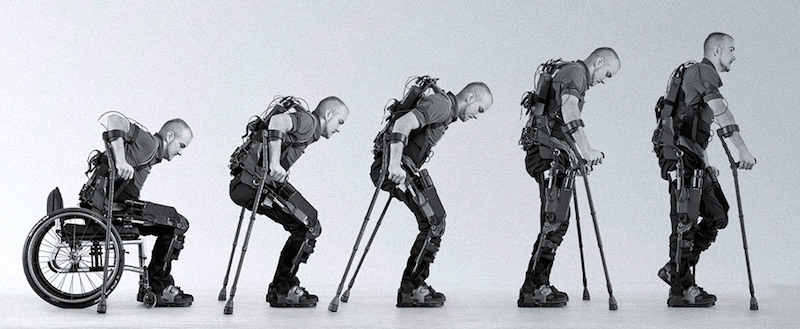What comes to mind when one says “powered exoskeleton”? Do the words conjur up images of comic book superheroes like Batman and Iron Man? Do they recall powered armors from futuristic films like Avatar and Ghost in the Shell? Do they seem like fact or pure fiction?
You’d be surprised to know that we’re coming closer to more mainstream adoption of powered exoskeletons. Simply put, a powered exoskeleton is a “wearable robot” or “wearable machine.” When worn, a powered exoskeleton typically detects its subject’s movements, and then it enhances them using the principle of electro-simulation. Exoskeletons equipped with powerful micro motors typically demand long battery lives, high torque capacities, and flexibility to work under load, such as when assisting a person while carrying heavy weights or while moving up and down a staircase. And just like a crab’s exoskeleton, a powered exoskeleton can protect its wearer by lessening strain on the body—all while optimizing their movements for greater speed and strength.
Powered exoskeletons have infinite potential to be used for the good. The impact they’ll have on human mobility could revolutionize how we treat people for illness, or how we arm them for dangerous situations. Here are five ways that powered exoskeletons are changing things for the better.
Helping the infirm, elderly, and persons with disability (PWDs)
Power suit technology will be a boon to the fields of medicine and occupational therapy, and to people whose movements are restricted by illness, old age, or physical disability. These wearable machines may soon bring the infirm out of their wheelchairs and sick beds, and back on the street. In this regard, powered exoskeletons can restore not only the wearer’s freedom of movement, but also their confidence, self-reliance, and sense of dignity.
Increasing productivity among industrial workers
The technology for job-assist exo-suits and wearable machinery is still new and fairly expensive. But once it rises in popularity, it could spell great new things for the mining, manufacturing, or logging industries, among others. A power suit could boost a worker’s performance in common industrial tasks, such as heavy lifting, squatting, or bending. It could also protect workers against overexertion and injuries, which cost the industrial sector billions of dollars in compensation every year.
Assisting disaster relief operations
In the same vein, governments and aid agencies may soon be employing powered exoskeleton technology for public safety. Firefighters, disaster relief workers, and other responders might one day have the option of donning special suits. These could help them move safely in and out of risky environments, such as fire-, earthquake-, or storm-afflicted areas.
Usage in sensor-actuated clothing
The innovativeness of wearable machinery will not stop at heavy, restricting, full-body metal frames. Companies like Superflex and Harvard’s Biodesign lab are also looking into lightweight garments that are outfitted with smart sensor actuation technology. The sensors may be coupled with motorized muscle bands, all working to help the wearer move with a little more strength and agility. Such clothing will have myriad applications. For instance, it can be used by an athlete going up a difficult mountain trail, or by a patient slowly recovering from a stroke.
Usage in military operations
We are not far from seeing powered exoskeleton technology occupy a place in military ops. The US Special Operations Command (USSOCOM) is currently in the process of building a Tactical Assault Light Operator Suit, an Iron Man-like powered exoskeleton. When completed, the suit may lend power and resilience to military troops that are far beyond their normal human capacity.
This branch of technology has a ways to go in terms of cost and accessibility to the general public. But so far, the developments are positive. We have high expectations for powered exoskeleton technology and are thus looking forward to becoming modern-day “Iron Men.”










Leave a Reply